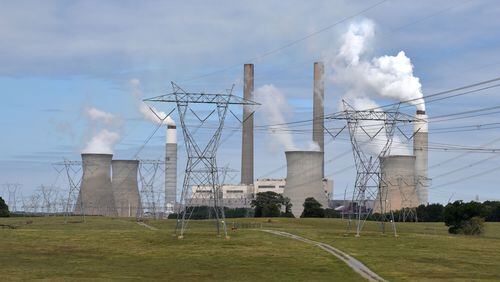Did water tests show evidence of coal ash contamination at Georgia power plants?
Yes and maybe, according to recent reports. Here's a round up of recent AJC coverage:
Earlier this month, a team of researchers at Duke University released a peer-reviewed study that found ash pond leaks at 21 power plants studied in five states, including two in Georgia. Coal ash is waste from coal-fired power plants, and can contain cancer-causing elements that remain in the environment for many thousands of years.
High levels of arsenic and selenium were found at all the sites, the researchers said, according to a story by AJC reporters Dan Chapman and Russell Grantham about Georgia Power's plans to close coal ash ponds much sooner than previously announced.
The study does not name the power plants, but a map published by researchers shows that both sites are in the center of the state.
The Duke team, lead by Professor Avner Vengosh, is known for identifying what it describes as distinct "fingerprints" for coal ash contamination in the atomic makeup of elements found in soil and water. These fingerprints can help show whether toxins such as arsenic that can be present naturally in soil and water are actually the result of pollution caused by humans.
The research was funded by the Southern Environmental Law Center, a group that has criticized how coal ash is stored and disposed of by power companies.
The study's conclusion raises some alarming possibilities:
With over 500 coal ash ponds in the southeastern United States, the results presented in this study suggest significant releases of coal ash impacted water to the environment. The magnitude and long-term environmental effects of leaking coal ash ponds are not fully understood, and future studies should further evaluate the overall impact of the coal ash environmental legacy in the United States and other parts of the world where coal ash is disposed to unlined surface impoundments. Future studies should also focus on monitoring the water quality in drinking water wells near coal ash ponds to determine whether contaminated groundwater has further migrated from the shallow aquifers underlying coal ash ponds to the regional aquifers and the associated risks to human health in these areas.
An AJC story published last year showed that massive man-made coal ash lagoons have a history of spilling into waterways and even residents' backyards.
And in other news, Georgia Power announced that it found elevated levels of arsenic and other toxins in test wells at three of its power plants, according to an AJC article by Russell Grantham. A company spokesman said the toxins could have come from herbicides used long ago at some of the sites, but it's worth noting that the testing was done to comply with new U.S. Environmental Protection Agency rules regulating coal ash and the toxins discovered are often found in coal ash.
From the story:
The company said it also found beryllium at three times the state limit at one test well at Plant Yates, near Newnan, and selenium slightly above the state limit at another test well at the plant.
You can read more about Georgia's history of coal ash problems here.
About the Author







